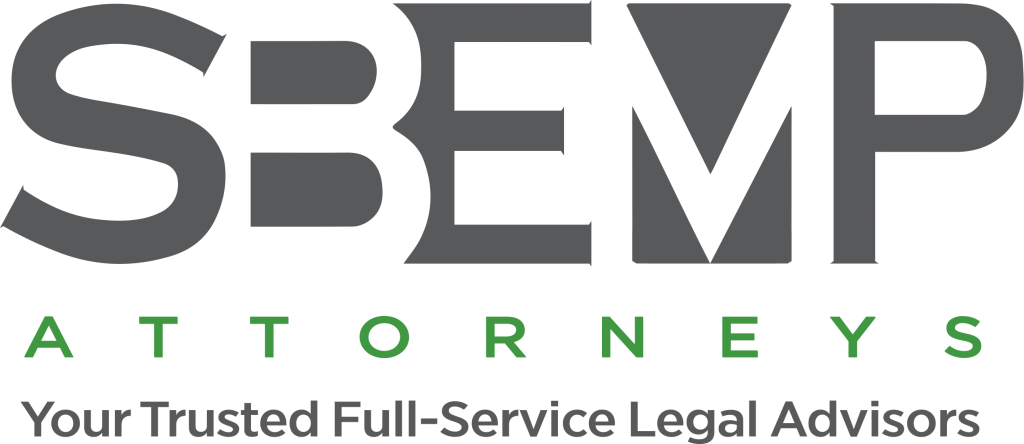 Bankruptcy is a legal process that allows individuals or businesses to eliminate or restructure their debts. However, there are different types of bankruptcy, each with its own set of rules and regulations. As a bankruptcy attorney, I have seen many clients struggle with understanding the differences between Chapter 7, 11, and 13 bankruptcy. In this blog post, I will explain the pros and cons of each type of bankruptcy and how they can help individuals and businesses facing financial difficulties. So, let’s dive into the world of bankruptcy and demystify the differences between Chapter 7, 11, and 13. Attorneys at SBEMP (Slovak, Baron, Empey, Murphy & Pinkney) law firm provides professional legal advice and services to clients in Palm Springs, Palm Desert, Rancho Mirage, Inland Empire, Orange County, Coachella Valley, Costa Mesa, San Diego, New Jersey, New York, and surrounding communities.
Bankruptcy is a legal process that allows individuals or businesses to eliminate or restructure their debts. However, there are different types of bankruptcy, each with its own set of rules and regulations. As a bankruptcy attorney, I have seen many clients struggle with understanding the differences between Chapter 7, 11, and 13 bankruptcy. In this blog post, I will explain the pros and cons of each type of bankruptcy and how they can help individuals and businesses facing financial difficulties. So, let’s dive into the world of bankruptcy and demystify the differences between Chapter 7, 11, and 13. Attorneys at SBEMP (Slovak, Baron, Empey, Murphy & Pinkney) law firm provides professional legal advice and services to clients in Palm Springs, Palm Desert, Rancho Mirage, Inland Empire, Orange County, Coachella Valley, Costa Mesa, San Diego, New Jersey, New York, and surrounding communities.
Understanding Bankruptcy and its Types: Chapter 7, Chapter 11, Chapter 13
Bankruptcy can be a complex and confusing process, especially when it comes to understanding the different types of bankruptcy. Chapter 7, Chapter 11, and Chapter 13 are three common types of bankruptcy that individuals and businesses may encounter. Each type has its own set of rules, regulations, and benefits.
Chapter 7 bankruptcy, also known as liquidation bankruptcy, involves the liquidation of assets to pay off debts. It is typically available to individuals and small businesses with limited assets and income. This type of bankruptcy can provide a fresh start by eliminating most unsecured debts, such as credit card debt and medical bills. However, it may also require the sale of certain assets.
Chapter 11 bankruptcy, on the other hand, is primarily designed for businesses, although individuals can also file for it in certain circumstances. This type of bankruptcy allows for the reorganization and restructuring of debts while the business continues to operate. It provides an opportunity to develop a plan to repay creditors over time, while also providing protection from collection actions.
Chapter 13 bankruptcy is similar to Chapter 11, but it is generally intended for individuals with a regular income and a manageable amount of debt. It allows individuals to develop a repayment plan to repay their debts over a three to five-year period. Chapter 13 can help individuals catch up on missed mortgage or car payments and can provide protection from foreclosure or repossession.
Understanding the differences between Chapter 7, Chapter 11, and Chapter 13 bankruptcy is crucial for anyone considering filing for bankruptcy. Each type has its own advantages and disadvantages, depending on the individual or business’s unique circumstances. By seeking the advice of a skilled bankruptcy attorney, you can navigate through the bankruptcy process with confidence and make informed decisions about which type of bankruptcy is best for your situation.
A Deep Dive into Chapter 7 Bankruptcy: The Pros, Cons and Everything in Between
Chapter 7 bankruptcy, also known as liquidation bankruptcy, is a crucial aspect of the bankruptcy system that individuals and businesses must understand. It offers both advantages and disadvantages, depending on your unique financial situation.
One of the most significant advantages of Chapter 7 bankruptcy is the opportunity for a fresh start. This type of bankruptcy allows for the elimination of most unsecured debts, such as credit card debt and medical bills. It can provide relief from overwhelming financial burdens and give individuals the chance to rebuild their lives.
However, it’s important to consider the potential drawbacks of Chapter 7 bankruptcy as well. One significant disadvantage is the potential sale of certain assets to repay creditors. While exemptions can protect certain assets, it’s essential to consult with a bankruptcy attorney to fully understand which assets may be at risk.
Additionally, Chapter 7 bankruptcy has certain eligibility requirements that must be met. For individuals, the means test evaluates income, expenses, and household size to determine eligibility. If your income exceeds the state’s median income, you may be required to file for Chapter 13 bankruptcy instead.
Overall, Chapter 7 bankruptcy can be a valuable tool for those in financial distress. It provides a way to eliminate unsecured debts and start fresh. However, it’s crucial to weigh the pros and cons, understand the potential asset liquidation, and consult with a knowledgeable bankruptcy attorney to determine if Chapter 7 bankruptcy is the right option for your specific circumstances.
Navigating Through Chapter 11 Bankruptcy: A Comprehensive Guide for Businesses
Chapter 11 bankruptcy is a complex and comprehensive process designed specifically for businesses facing financial difficulties. It allows businesses to reorganize their debts while continuing their operations. Navigating through Chapter 11 bankruptcy can be daunting, but with the right guidance, businesses can emerge stronger and more financially stable.
One of the key benefits of Chapter 11 bankruptcy is the ability to develop a plan to repay creditors over time. This plan, known as a reorganization plan, outlines how the business will restructure its debts and repay them in a way that is feasible and sustainable. It allows the business to regain control of its financial affairs and work towards a successful future.
However, it’s important to understand that Chapter 11 bankruptcy comes with certain challenges as well. The process can be time-consuming and expensive, requiring extensive documentation and legal expertise. The business must also seek approval from creditors for its reorganization plan, which can be a complex and often contentious process.
During Chapter 11 bankruptcy, the business must continue to operate and generate revenue to meet its ongoing expenses and fulfill its obligations under the reorganization plan. This can be a delicate balancing act, requiring careful management of resources and a clear understanding of the business’s financial capabilities.
To navigate through Chapter 11 bankruptcy successfully, it is essential for businesses to seek the guidance of a knowledgeable bankruptcy attorney. An experienced attorney can help the business develop a comprehensive reorganization plan, negotiate with creditors, and ensure compliance with all legal requirements.
Overall, Chapter 11 bankruptcy offers businesses an opportunity to restructure and repay their debts while continuing their operations. With the right guidance and careful planning, businesses can successfully navigate through Chapter 11 bankruptcy and emerge on the path to financial recovery and success.
The Reality of Chapter 13 Bankruptcy: Unpacking the Benefits and Drawbacks
Chapter 13 bankruptcy is a unique option for individuals facing financial difficulties. It offers a range of benefits, but it’s essential to consider the potential drawbacks as well. Let’s unpack the reality of Chapter 13 bankruptcy.
One significant benefit of Chapter 13 bankruptcy is the opportunity to catch up on missed mortgage or car payments. This type of bankruptcy allows individuals to develop a repayment plan that spans three to five years, making it more manageable to pay off debts while keeping their assets. Chapter 13 also provides protection from foreclosure or repossession, giving individuals the chance to keep their homes and vehicles.
Another advantage of Chapter 13 bankruptcy is the ability to consolidate debts and reduce monthly payments. Under the repayment plan, individuals make a single monthly payment to the bankruptcy trustee, who then distributes it to creditors. This streamlined approach can alleviate the stress of juggling multiple payments and can make it easier to budget and manage finances.
However, it’s important to note that Chapter 13 bankruptcy also has its drawbacks. One key consideration is the duration of the repayment plan, which can range from three to five years. This can be a lengthy commitment, requiring individuals to adhere to the plan and make consistent payments for an extended period.
Additionally, Chapter 13 bankruptcy requires individuals to have a regular income and a manageable amount of debt. If an individual’s income is too high or their debt is too large, they may not qualify for Chapter 13 and may need to explore alternative options.
Navigating Chapter 13 bankruptcy successfully requires careful planning and expert guidance. It’s crucial to consult with a skilled bankruptcy attorney who can help you assess your eligibility, develop a viable repayment plan, and guide you through the entire process.
Choosing the Right Path: How to Determine Which Bankruptcy Option is Best For You
Navigating the world of bankruptcy can be overwhelming, but understanding your options is crucial in making the best decision for your financial future. So, how do you determine which bankruptcy option is right for you? Here are some key factors to consider.
First, assess your financial situation. Look at your income, assets, and debts. Are you an individual with limited income and few assets? Chapter 7 bankruptcy may be a suitable option for you. On the other hand, if you own a business and want to reorganize your debts while continuing operations, Chapter 11 bankruptcy might be the better choice. For individuals with a regular income and manageable debt, Chapter 13 bankruptcy allows you to develop a repayment plan over a three to five-year period.
Next, think about your long-term goals. Are you looking for a fresh start and want to eliminate most of your unsecured debts? Chapter 7 bankruptcy could be the way to go. If you want to save your business and develop a plan to repay creditors, Chapter 11 may be the best fit. And if you want to catch up on missed payments and keep your assets, Chapter 13 might be the right option for you.
Finally, seek professional advice. Consulting with a skilled bankruptcy attorney is essential in making an informed decision. They can evaluate your unique circumstances, explain the benefits and drawbacks of each option, and guide you through the entire process.
Ultimately, choosing the right bankruptcy option requires careful consideration of your financial situation, goals, and expert advice. By taking the time to assess your needs and seeking professional guidance, you can make the best decision to achieve financial stability and a brighter future.
Have any legal questions? Contact the Attorneys at SBEMP Law Firm:
For more information or to request a consultation please contact the law offices of SBEMP (Slovak, Baron, Empey, Murphy & Pinkney) by clicking here.
SBEMP LLP is a full service law firm with attorney offices in Palm Springs (Palm Desert, Inland Empire, Rancho Mirage, Indian Wells), CA; Indian Wells, CA; Costa Mesa (Orange County), CA; San Diego, CA; New Jersey, NJ; and New York, NY.
DISCLAIMER: This blog post does not constitute legal advice, and no attorney-client relationship is formed by reading it. This blog post may be considered ATTORNEY ADVERTISING in some states. Prior results do not guarantee a similar outcome. Additional facts or future developments may affect subjects contained within this blog post. Before acting or relying upon any information within this newsletter, seek the advice of an attorney.
